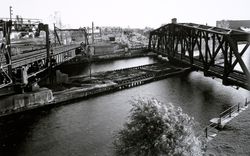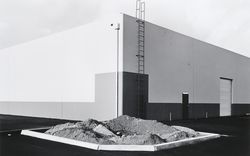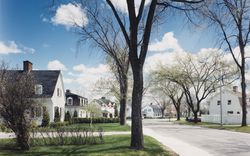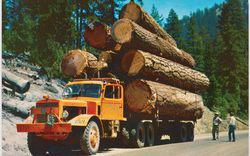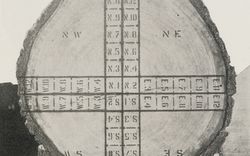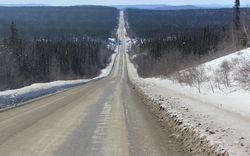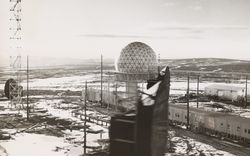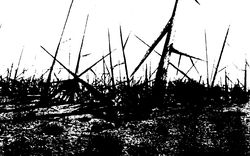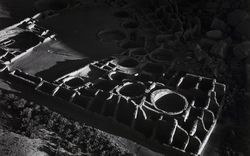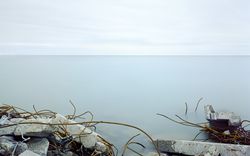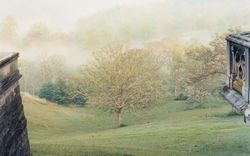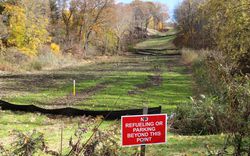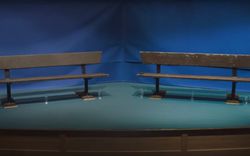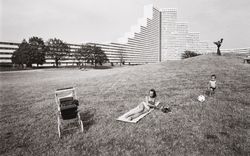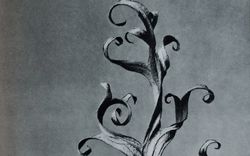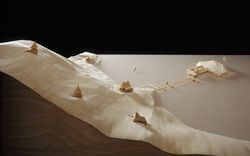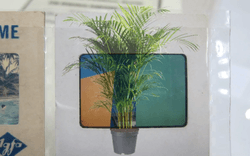No Parks?
A debate featuring Sarah Dunn, Karen K. Lee, Nikita Lopoukhine, Martin Lukacs, and Martin Rein-Cano. Introduced by Lev Bratishenko
Freud called parks a fantasy because they perform a function in society like fantasies do for individuals. When agriculture or industry threaten to change the earth into something unrecognizable, we create “reservations.” These places maintain the old condition of things, which has been regrettably sacrificed to necessity everywhere else. And in these reservations everything is permitted to grow and spread.
Everything is not really permitted, of course. Fires are put out and roads are put in, overly familiar bears are shot, and pests are sprayed with pesticides. When entering a country, police search your bags for specific animals and plants to help keep parks looking the right kind of natural. Police and wardens control the human and nonhuman animals inside parks.
If capital sees the rest of the world is valuable because it can be built on or dug up, then parks are the only “natural resource” that is valuable precisely because it appears undeveloped. This definition makes the industrialist and the landscape architect into the same thing since both turn nature into something consumable.
Canada’s first national park, Banff, originated in railroad tourism. Before building the Banff Springs Hotel, the Canadian Pacific Railroad offered artists free rail tickets and studios to travel west and represent the idealized landscape they found there. And to make that landscape suitably natural, which means suitably empty-looking, the Stoney First Nation had to be erased. Sustenance hunting and fishing were banned while tourist fly fishing, and settler grazing animals, cutting trees, and mining were encouraged.
In the past 150 years, about 12 percent of the world has been set aside through the establishment of some 100,000 protected areas. Around half of these are lands and territories traditionally occupied and used by Indigenous Peoples. In the Americas, this number rises to over 80 percent.
In cities, competing visions for development often collide in parks. In 2009, the city of Rio de Janeiro began construction of a three-metre-tall wall to protect a green belt from a dozen expanding slums. Eleven kilometers long, it cost more per metre than public housing built to the highest local standard, but officials presented the wall as an environmental necessity. “Deforestation is bad for everyone,” they said. How do you argue with that?
Through parks we distinguish between official and informal nature, and despite parks being thoroughly constructed by people, we insist on seeing them as more natural than artificial. This can create curious situations where people experience nature in environments that are designed, constructed, and maintained.
We have a long tradition of discovering moral principles in nature; in this mirror we have found ideologies of total competition, the so-called battle for survival, as well as total interdependence, the idea of the planet as one organism.
A great accomplishment of the scientific revolution and its lenses, taxonomies, and accounting systems was the transformation of nature into objects on which people could act with predictable results. Immediately we began speculating, and a wave of appropriation circled the globe, guided by new ways of seeing and surveying: gridded cities were surrounded by gridded lands. The rest we called wilderness, which had its own magic. Wilderness could be tamed and conquered for industry, or preserved as a refuge from the same industry. Many of today’s great urban parks originated as the estates of early industrialists, the pioneers of extraction.
The discovery of hygiene made parks into vast outdoor sanatoria, like factory farms of human health. By the twentieth century nature was sufficiently medicalized that modernism called urban parks the “lungs” of the city. Parks were now another kind of infrastructure, and built with the same intensity of social purpose as water and sewage systems, highway networks, and housing developments. The iconic housing tower in a vast park stood against chaotic urban density, land speculation, and pollution. The presence of urban nature transformed unhealthy environments into healthy ones. Or, healthy-looking ones.
Once the West began to deindustrialize more rapidly in the 1970s, these forms took on new meanings. Parks that once helped factory workers heal and return to work in polluted environments now became amenities for office workers and drivers of new kinds of real estate investment. In the late twentieth century there was an explosion of interior natures, indoor parks in office atria and mall courts. These monumental urban environments had precisely-controlled temperature and humidity, which are great for people and for plants, and these forms proliferated just as the city, most memorably New York City, appeared to be failing and falling apart.
This corporate nature emerged in response to collapsing belief in public nature, and it continues today. In downtown Seattle, Amazon is building a greenhouse with an indoor river and over 3,000 exotic plants for office workers to have meetings. And Apple’s new circular headquarters in Cupertino is basically an inhabitable wall around a park. The park becomes a perk.
If parks still represent a confused desire for some kind of nature, do they also allow us to continue abusing it? Parks help engineers hike the Rockies on the weekend and return, spiritually refreshed, to work for oil companies during the week. Parks also hide industrial scars and toxic landscapes, like the weapons testing ground in Colorado that became the Rocky Mountain Arsenal National Wildlife Refuge. And at the nearby plutonium factory at Rocky Flats, radioactive waste was transfigured into wilderness.
Urban parks were traditionally signs of affluence and success. They were proof that a city did not need to commit all its land to industry or inhabitation, and low-density suburbs were once attractive for the same reason. All this empty green space says: look how rich we are.
Today, when the idea of separating the economic crisis from the environmental one is increasingly dubious, there are calls for new kinds of cities. Do we also need new kinds of parks?
Will parks appear as unsustainable luxuries one day? Like public medical care, free universities, or old age pensions are presented as being? The US government has already announced the targeting of the Arctic National Wildlife Refuge for oil and gas exploration. If we extract all of the natural resources we can find, what will replace parks? In China you can buy compressed air from Banff—a park in a can.
What happens to our idea of the city without parks? What new possibilities might emerge, if we were to get rid of parks as we know them?





This debate was convened in May 2017 in the context of our exhibition It’s All Happening So Fast: A Counter-History of the Modern Canadian Environment, a survey of five decades of conflicted and contradictory views of “nature.”
